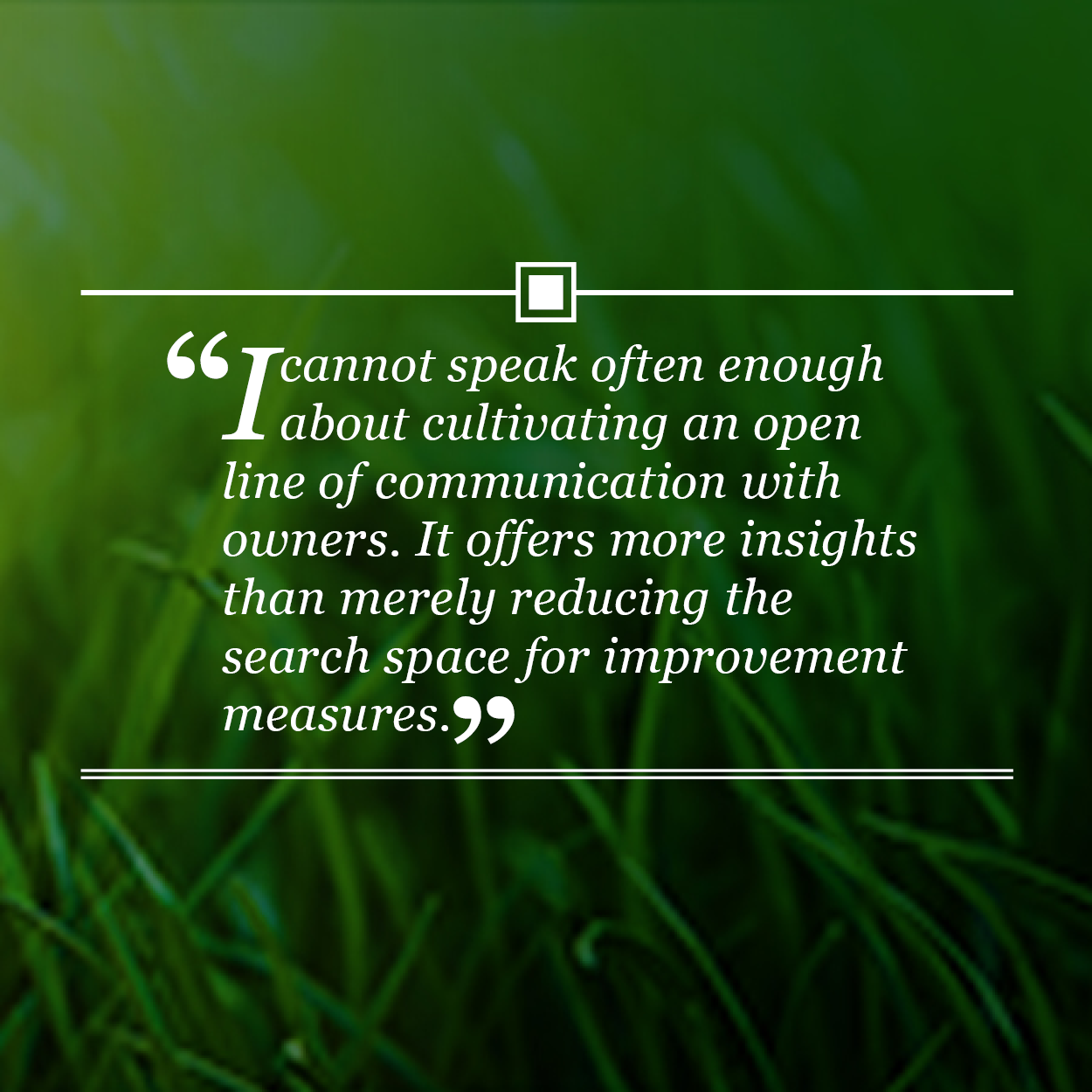 Reducing building energy use means reducing utility bills. This is the fundamental fact that has driven building audits for the last 20 years. Yet, it was only in 2018 that ASHRAE published Standard 211, which codified the industry standards for commercial building energy audits. In the years preceding Standard 211, audits could have significant variability in the delivered outcomes. Now, with a standard in place and clear expectations outlined, auditors are seeing building owners’ priorities expand to include more varied motivations than just energy efficiency.
Reducing building energy use means reducing utility bills. This is the fundamental fact that has driven building audits for the last 20 years. Yet, it was only in 2018 that ASHRAE published Standard 211, which codified the industry standards for commercial building energy audits. In the years preceding Standard 211, audits could have significant variability in the delivered outcomes. Now, with a standard in place and clear expectations outlined, auditors are seeing building owners’ priorities expand to include more varied motivations than just energy efficiency.
Often, these modern evaluations, while built on the common framework from Standard 211 and other earlier guides, go beyond the prescribed simple paybacks. When performing an audit that does not fit into the predefined scope of guidelines, an auditor’s main goal should be addressing the building owner’s priorities. This means the consulting teams must define the scope of the audit with the owners and the types of expertise needed internally to evaluate the owner’s questions.
For the auditor and their team, this means being able to develop multiple paths to the client’s overarching goals, ensuring that no single path is dependent on individual improvement measures. For example, consider the recommendation to replace an air-cooled chiller. If this is part of the core replacement strategy during reporting, a long list of recommendations can be made as a result: chilled water supply temperature reset strategy, differential pressure reset strategies, bypass valves at air handling units, various pumping strategies and so on. All these improvement measures stem from a single suggestion. What happens if the owner’s capital budget plan doesn’t allow for a chiller replacement? The auditor has spent considerable time and effort analyzing energy savings, carbon footprint reduction and any other agreed-on metrics for something that isn’t valuable to the owner. But, with a little more effort, multiple paths can be developed that include chiller refurbishment, pump replacement, etc. Increased core options can then be fitted to the owner’s needs and the corollary improvement measures chosen to fit within the new framework.
 Taking this base principal of providing multiple paths to the ever-broadening owner’s priorities, we are finding that the search space for improvement measures is increasing exponentially. That is why I cannot speak often enough about cultivating an open line of communication with owners. It offers more insights than merely reducing the search space for improvement measures. These conversations also give insights into the owner’s decision-making process. Is the audit government-mandated? Does the corporation see a value in reaching carbon neutrality? Is water conservation the primary driver? Understanding the motivation helps the auditor’s analysis focus on what is useful to the owner.
Taking this base principal of providing multiple paths to the ever-broadening owner’s priorities, we are finding that the search space for improvement measures is increasing exponentially. That is why I cannot speak often enough about cultivating an open line of communication with owners. It offers more insights than merely reducing the search space for improvement measures. These conversations also give insights into the owner’s decision-making process. Is the audit government-mandated? Does the corporation see a value in reaching carbon neutrality? Is water conservation the primary driver? Understanding the motivation helps the auditor’s analysis focus on what is useful to the owner.
The newest evolution of these types of audits comes from the COVID-19 pandemic. With an increased focus on indoor environmental quality in public spaces, a deeper review of ventilation, filtration, and air distribution systems has been called for. Many institutional and governmental clients commissioned readiness studies of their facilities to protect the occupants from the transmission of airborne viruses. Based on the procedures recommended by professional organizations like ASHRAE’s Epidemic Task Force, consultants reviewed the layout and performance of the air distribution systems, as well as the capacity to add supplemental protective protocols, like enhanced filtration and ultraviolet lighting to inactivate the viral load. With proper occupancy sensors in place, ASHRAE’s equivalent outdoor air rate can help mitigate the energy increases that this rise in outdoor air naturally leads to.
In this age of increasing scope for consultants, no individual can have expertise in all areas of energy efficiency, microgrids, renewable generation and pandemic response. This evolution of building audits requires a team of individuals with varied, but related, expertise. Depending on the audit’s scope, the team may include commissioning providers, energy managers, test and balance agencies, sustainability consultants, environmental health professionals, security experts, and information technology specialists. It is up to the auditors to forge these connections with owners and build the teams capable of providing the next generation of solutions.
Mat Coalson is a commissioning and energy specialist for Hanson and can be reached at mcoalson@hanson-inc.com.